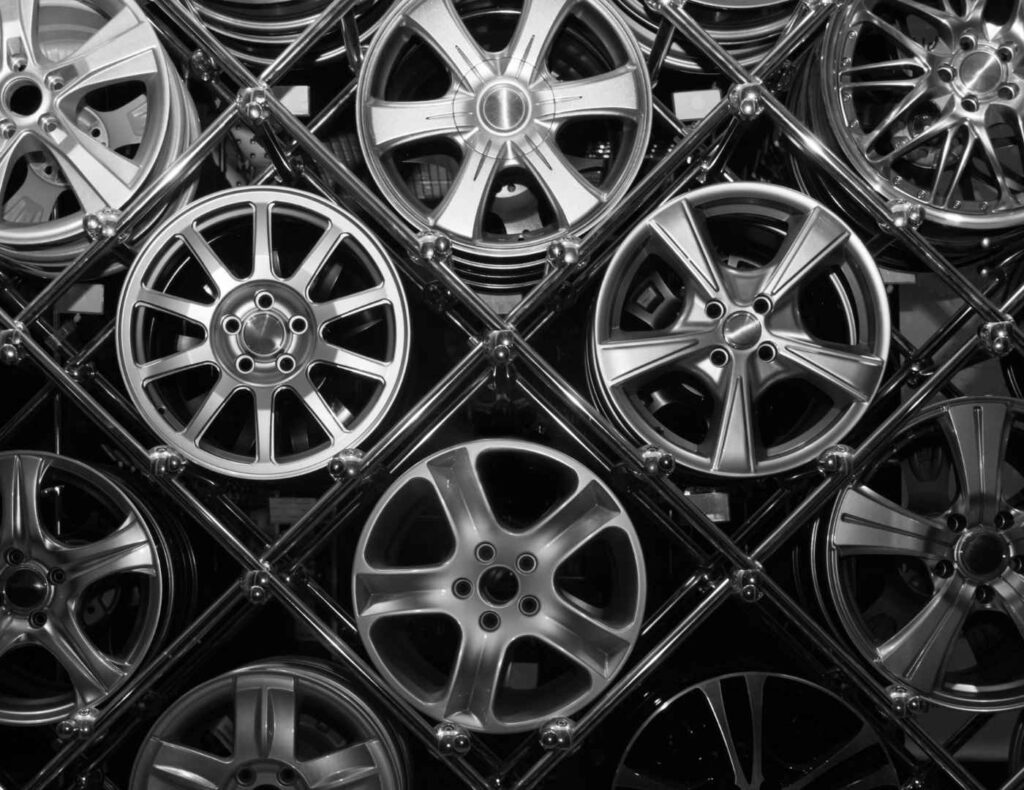Everything You Need to Know About Steel Rims
When it comes to choosing wheels for your vehicle, the variety of options can be overwhelming. Among them, steel rims stand out as a popular and practical choice for many drivers, especially in regions with harsh winter conditions like Richmond Hill, Canada. But what exactly are steel rims? How do they compare to other types, and what benefits do they offer?
This comprehensive guide will provide you with everything you need to know about steel rims — from their composition and advantages to maintenance tips and usage in different driving environments.

What Are Steel Rims?
Steel rims, often called steel wheels, are vehicle wheels made from pressed and welded steel. Unlike alloy wheels, which are crafted from a mix of aluminum or magnesium and other metals, steel rims are constructed from solid steel sheets that are shaped and welded together to form a strong, durable wheel.
Typically, steel rims are heavier and thicker than alloy rims, which directly affects their performance characteristics, weight, and cost. They have a more utilitarian design and are often covered with hubcaps to enhance their appearance.
The History and Evolution of Steel Rims
Steel rims have been used in the automotive industry for decades, dating back to the early 1900s. Before the rise of alloy wheels, steel was the standard material for most vehicle wheels due to its strength and affordability.
With advances in technology, alloy wheels became more popular for their lightweight and aesthetic appeal, especially in performance and luxury cars. However, steel rims have never disappeared and continue to be favored for certain applications, particularly in tough driving conditions and on budget-friendly vehicles.
Advantages of Steel Rims
1. Durability and Strength
Steel rims are incredibly tough and can withstand rough road conditions, potholes, and winter road salt better than many alloy wheels. This makes them highly resistant to cracking or bending.
2. Cost-Effectiveness
Steel rims are generally more affordable to manufacture and replace, making them a budget-friendly option for many drivers.
3. Ideal for Winter Use
Because steel rims can endure salt, snow, and ice better than alloy rims, they are commonly chosen for winter tires in cold climates like Richmond Hill.
4. Easier to Repair
If a steel rim gets bent or damaged, it can often be hammered back into shape by a professional, unlike alloy wheels which may need complete replacement.
5. Heavy Weight Offers Stability
The extra weight of steel rims can improve vehicle stability on icy or slippery surfaces by adding more traction.
Disadvantages of Steel Rims
While steel rims offer several benefits, there are some downsides to consider:
Heavier Weight: Steel rims are heavier, which can reduce fuel efficiency and acceleration compared to lighter alloy wheels.
Aesthetics: Steel rims typically have a plain, utilitarian look and often require hubcaps for visual appeal.
Corrosion Risk: Although resistant, steel rims can rust over time if protective coatings wear off and if exposed to harsh elements continuously.
Steel Rims vs. Alloy Rims: What’s the Difference?
| Feature | Steel Rims | Alloy Rims |
|---|---|---|
| Material | Pressed steel | Aluminum or magnesium alloy |
| Weight | Heavier | Lighter |
| Strength | Very durable | Strong but can crack |
| Cost | More affordable | More expensive |
| Appearance | Basic and functional | Stylish, customizable |
| Maintenance | Can rust, but easy to repair | More resistant to corrosion |
| Best Use Cases | Winter, rough roads, budget | Performance, aesthetics |
When Should You Choose Steel Rims?
Winter Driving: Steel rims paired with winter tires provide enhanced durability and resistance to salt and slush.
Budget Constraints: If cost is a priority, steel rims offer a reliable and economical option.
Daily Driving on Rough Roads: Steel rims withstand potholes and road debris better, making them suitable for harsh or rural roads.
Fleet Vehicles or Work Trucks: Due to their toughness and lower replacement cost, steel rims are often the default for commercial vehicles.
How to Maintain Steel Rims
Proper care extends the lifespan of your steel rims and keeps them looking good.
1. Regular Cleaning
Wash rims frequently during winter months to remove road salt and grime which cause corrosion.
2. Inspect for Damage
Check for bends, dents, or corrosion regularly to avoid unsafe driving conditions.
3. Apply Protective Coatings
Consider painting or powder coating steel rims to enhance rust resistance.
4. Proper Tire Mounting
Ensure tires are mounted and balanced professionally to prevent rim damage.
Steel Rims and Winter Tires: The Perfect Match
In Richmond Hill’s cold winters, switching to winter tires is essential for safe driving. Steel rims often pair perfectly with winter tires because:
They withstand corrosion from winter road salt.
They are less costly to replace if damaged during snowy road conditions.
Their extra weight aids traction on ice and snow.
Many local Richmond Hill drivers prefer to mount winter tires on steel rims and keep their alloy rims reserved for summer use.
Frequently Asked Questions (FAQs)
Q1: Can steel rims rust?
Yes, steel rims can rust over time if protective coatings wear off and they are exposed to moisture and salt. Regular cleaning and maintenance help prevent rust.
Q2: Are steel rims good for all seasons?
Steel rims are durable year-round but are especially preferred in winter due to their resistance to damage and affordability.
Q3: How do steel rims affect vehicle performance?
They are heavier than alloy rims, which can slightly reduce fuel efficiency and acceleration but improve stability in winter conditions.
Q4: Can I use steel rims on a luxury car?
While steel rims are functional, most luxury vehicles use alloy rims for their aesthetic and performance benefits.
Q5: How do I know if my vehicle uses steel or alloy rims?
You can check the wheel material by visual inspection or by asking your dealership or mechanic.
Conclusion
Steel rims remain a practical and cost-effective choice for many drivers, especially those living in areas with harsh winter climates like Richmond Hill, Canada. Their durability, ease of repair, and winter resilience make them the go-to option for winter tire setups and vehicles exposed to challenging road conditions.
Understanding the benefits and limitations of steel rims will help you make informed decisions about your vehicle’s wheels, ensuring safety, performance, and value.

